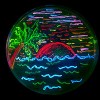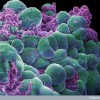Archive for August, 2010

Recycled DNA
Aug 25th
The majority of our DNA does not code for protein or RNA and does not seem to regulate how the information is used. Sometimes referred to as “junk” DNA, these regions make up about 98.5 % of our genome. Is this DNA really junk?
Scientists have recently identified a section of “junk” DNA that can regain function and cause disease. The section of DNA is made of repeat regions of the same sequence. They found that individuals who have 1-10 repeats on the end of chromosome 4 can develop one of the most common forms of muscular dystrophy, FSHD. The goal now is More >

Fighting Addiction
Aug 13th
Having an addiction can be devastating, to those that have it and to those that are exposed to it. The addiction can be to a variety of different things such as alcohol, drugs, gambling, internet shopping, video games or even work. But what causes these addictions? Why do some people have the ability to enjoy these things, yet leave them, while others seem to never be able to stop?
Well, it could be your family and it could be your environment. Studies have shown that addictions run in families. In fact, if a parent has an addiction, the child is 4 More >

Fluorescent Controversy
Aug 13th
After conducting a bacterial transformation lab with my students, where we genetically engineer the bacteria to make a jellyfish protein that fluoresces, we always jump into the discussion of why this technique is important. I always try to get the students to think of ways that this could benefit them.
Among other uses, we finally get to the idea that these bacterial cells can be used as factories to make any protein you want, even human proteins. It all depends on what recipe, or gene, you give them. If you give them the recipe to make human insulin, they will. And then More >

Why no cure for cancer?
Aug 5th
I was looking through some of the comments on the blog and thought I would address a few of them, as I imagine others would have similar questions. One reader wanted to know why some cancers are more fatal than others. For example, the five-year survival rate for prostate cancer is nearly 99%, while it is 4% for pancreatic cancer. There are several reasons for this. First, some cancers are by nature slow growing and unlikely to spread through the body, like prostate cancers, while other cancers are very aggressive and often metastasize. Another issue is diagnosis: there are good More >
